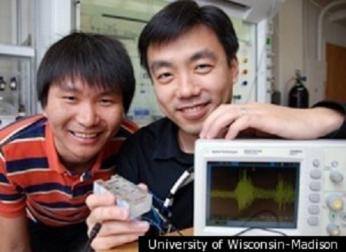
By Laura Caseley
When it comes to nanotechnology, the seemingly smallest motions can provide reliable and renewable energy. This is what is being discovered at the University of Wisconsin in Madison by Materials Science and Engineering Assistant Professor Xudong Wang, postdoctoral Researcher Chengliang Sun and graduate student Jian Shi, who have created a plastic microbelt that vibrates in low-speed air movement, such as that of human respiration. But it not only vibrates–the polyvinylidene fluoride (PVDF) used in the microbelt actually gathers an electric charge in response to this mechanical stress in what is known as the piezoelectric effect. This electric charge is sufficient enough to power tiny electric devices, the kind used in nanotechnology.
A device that could get its energy from the body''s natural motions, such as respiration, blood flow, motion and heat, could drastically change the face of biomedical technology. With this consistent source of power, pacemakers, for example, would never have to be replaced, and devices could regularly measure blood glucose levels in individuals with diabetes.
To create the microbelt, Wang and his team used an ion-etching process to shave the PVDF thinner and thinner without removing its piezoelectric properties. In time, and with some improvements made to the process, Wang believes that the PVDF can actually be thinned to a sub-micron measurement. As an added bonus, PVDF is bio-compatible, making it a candidate for the advancement of micro-sized medical devices.
"Basically, we are harvesting mechanical energy from biological systems," Wang said. "The airflow of normal human respiration is typically below about two meters per second. We calculated that if we could make this material thin enough, small vibrations could produce a microwatt of electrical energy that could be useful for sensors or other devices implanted in the face."
Article courtesy of huffingtonpost.com

